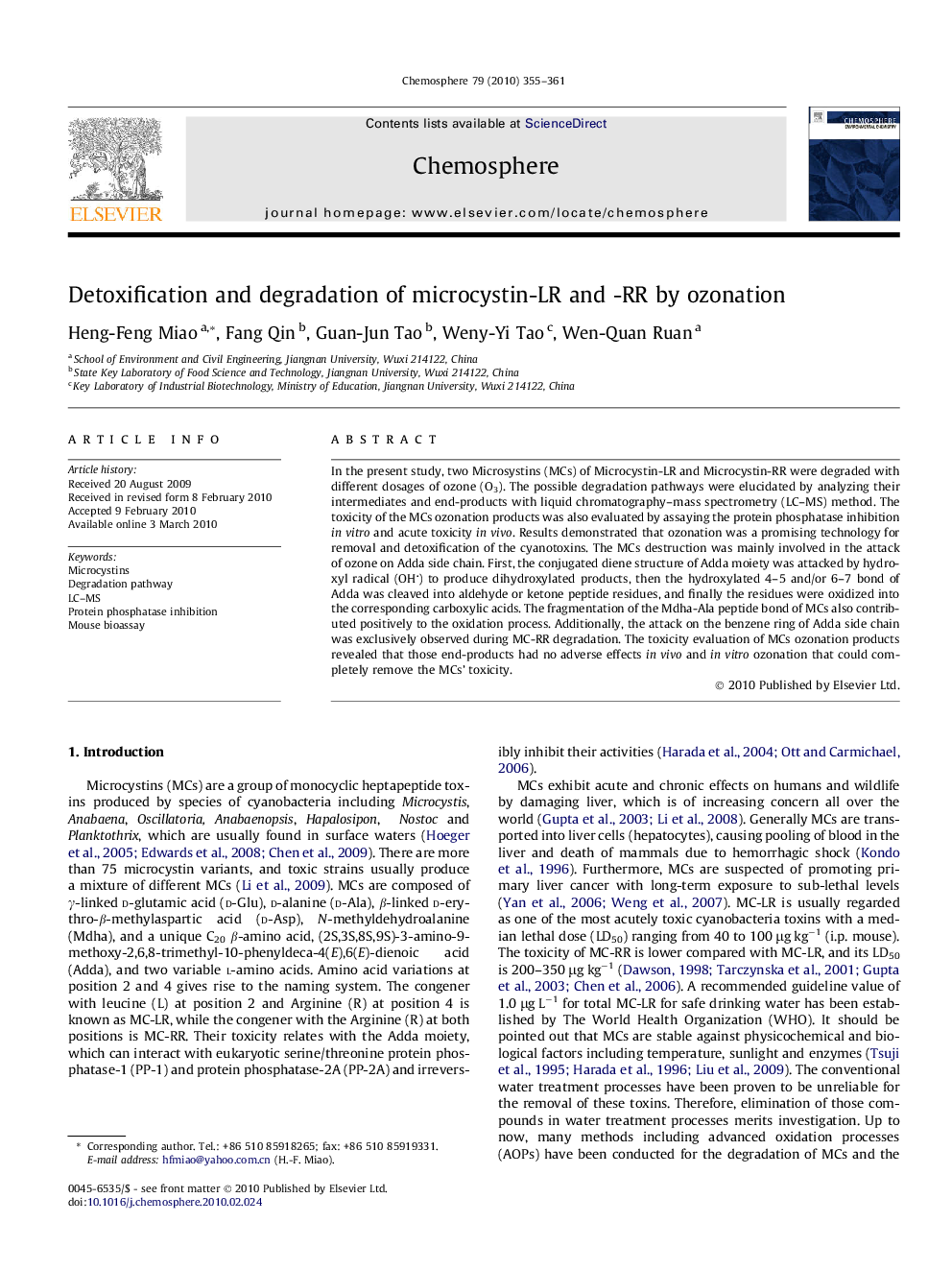| Article ID | Journal | Published Year | Pages | File Type |
|---|---|---|---|---|
| 4411720 | Chemosphere | 2010 | 7 Pages |
In the present study, two Microsystins (MCs) of Microcystin-LR and Microcystin-RR were degraded with different dosages of ozone (O3). The possible degradation pathways were elucidated by analyzing their intermediates and end-products with liquid chromatography–mass spectrometry (LC–MS) method. The toxicity of the MCs ozonation products was also evaluated by assaying the protein phosphatase inhibition in vitro and acute toxicity in vivo. Results demonstrated that ozonation was a promising technology for removal and detoxification of the cyanotoxins. The MCs destruction was mainly involved in the attack of ozone on Adda side chain. First, the conjugated diene structure of Adda moiety was attacked by hydroxyl radical (OH) to produce dihydroxylated products, then the hydroxylated 4–5 and/or 6–7 bond of Adda was cleaved into aldehyde or ketone peptide residues, and finally the residues were oxidized into the corresponding carboxylic acids. The fragmentation of the Mdha-Ala peptide bond of MCs also contributed positively to the oxidation process. Additionally, the attack on the benzene ring of Adda side chain was exclusively observed during MC-RR degradation. The toxicity evaluation of MCs ozonation products revealed that those end-products had no adverse effects in vivo and in vitro ozonation that could completely remove the MCs’ toxicity.
